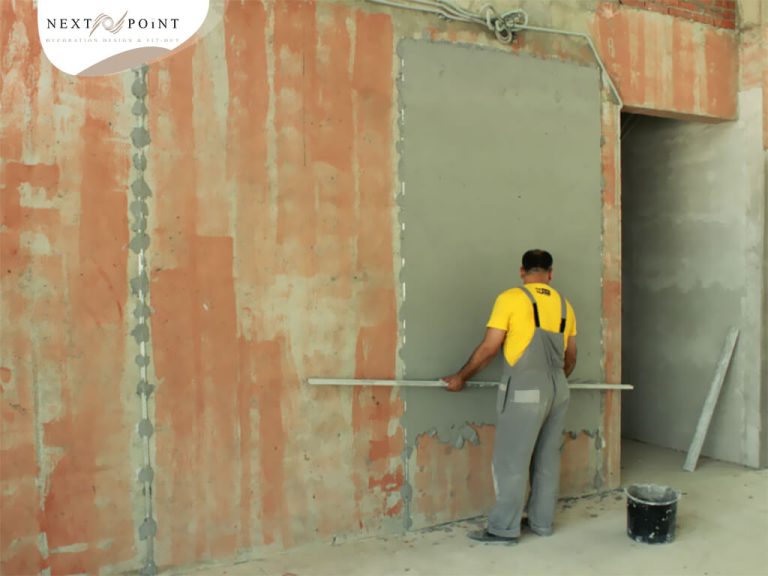Plasterwork
Plasterwork is a technique that involves applying plaster to walls and ceilings to create a smooth, even surface. It is a common part of the construction and renovation process, and it is often used in both residential and commercial settings. Here are some key things to know about plasterwork:
- Types of Plaster: There are several types of plaster used in plasterwork, including lime plaster, gypsum plaster, and cement plaster. Each type has its own unique properties and is suited to different applications.
- Preparation: Proper preparation is critical to the success of plasterwork. This may include cleaning the surface, applying a primer, and repairing any cracks or other damage before applying the plaster.
- Application: Plaster is typically applied in multiple coats, with each layer allowed to dry before the next is applied. The final coat is smoothed and finished to create a smooth, even surface.
- Finishing: Once the plaster has dried, it can be finished in a variety of ways, including sanding, painting, or applying a decorative finish such as Venetian plaster or stucco.
- Benefits: Plasterwork can offer a range of benefits, including improved durability, soundproofing, and insulation. It can also be used to create a range of decorative effects, from simple smooth finishes to intricate patterns and designs.
- Maintenance: Proper maintenance is important to ensure the longevity of plasterwork. This may include regular cleaning, repairing any cracks or damage, and repainting or refinishing as needed.
Overall, plasterwork is a versatile and effective technique for creating smooth, durable surfaces in a range of settings. With proper preparation and maintenance, it can provide both functional and aesthetic benefits for years to come.

Plasterwork Ceiling
Plasterwork ceilings are a popular choice for both residential and commercial spaces. Here are some key things to know about plasterwork ceilings:
- Design: Plasterwork ceilings can be designed in a variety of styles, from simple smooth finishes to more elaborate decorative designs such as coffered ceilings or plaster moldings.
- Installation: Plasterwork ceilings are typically installed in multiple layers, with each layer allowed to dry before the next is applied. The final layer is smoothed and finished to create a smooth, even surface.
- Materials: Plasterwork ceilings can be made from a range of materials, including lime plaster, gypsum plaster, and cement plaster. Each material has its own unique properties and is suited to different applications.
- Maintenance: Proper maintenance is important to ensure the longevity of plasterwork ceilings. This may include regular cleaning, repairing any cracks or damage, and repainting or refinishing as needed.
- Benefits: Plasterwork ceilings offer a range of benefits, including improved durability, soundproofing, and insulation. They can also add value and visual interest to a space, particularly when combined with other decorative elements such as lighting or moldings.
- Cost: The cost of plasterwork ceilings can vary depending on a range of factors, including the size of the space, the complexity of the design, and the type of materials used.
Overall, plasterwork ceilings can provide a beautiful and functional addition to any space. With proper installation and maintenance, they can provide both aesthetic and practical benefits for years to come.
We offer a range of design packages to fit your budget and goals
Submit your details for a call back
How useful was this post?
Click on a star to rate it!
Average rating 0 / 5. Vote count: 0
No votes so far! Be the first to rate this post.
